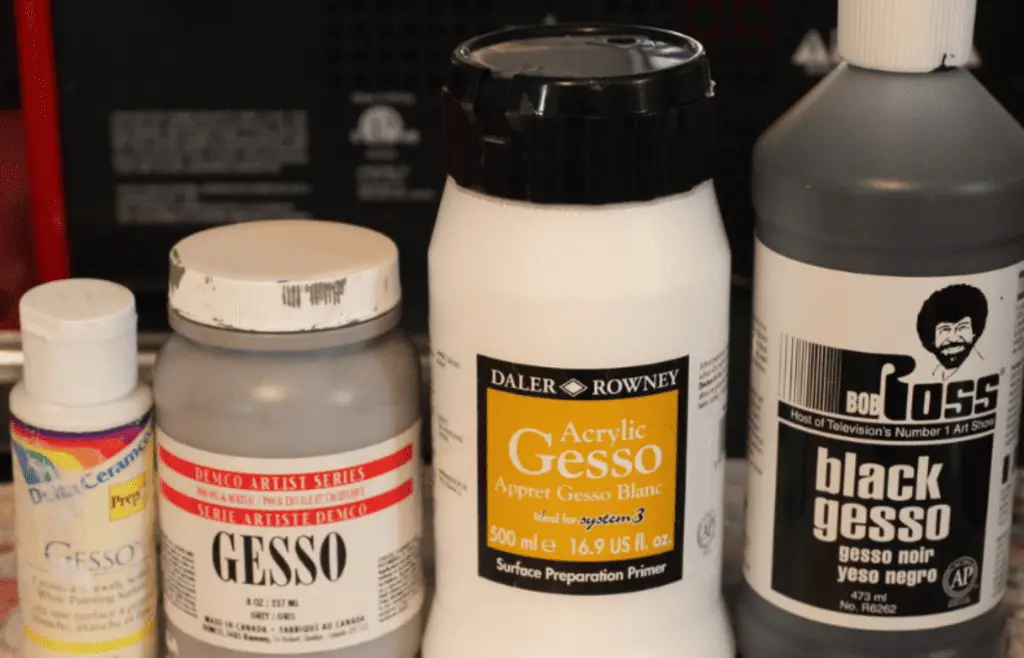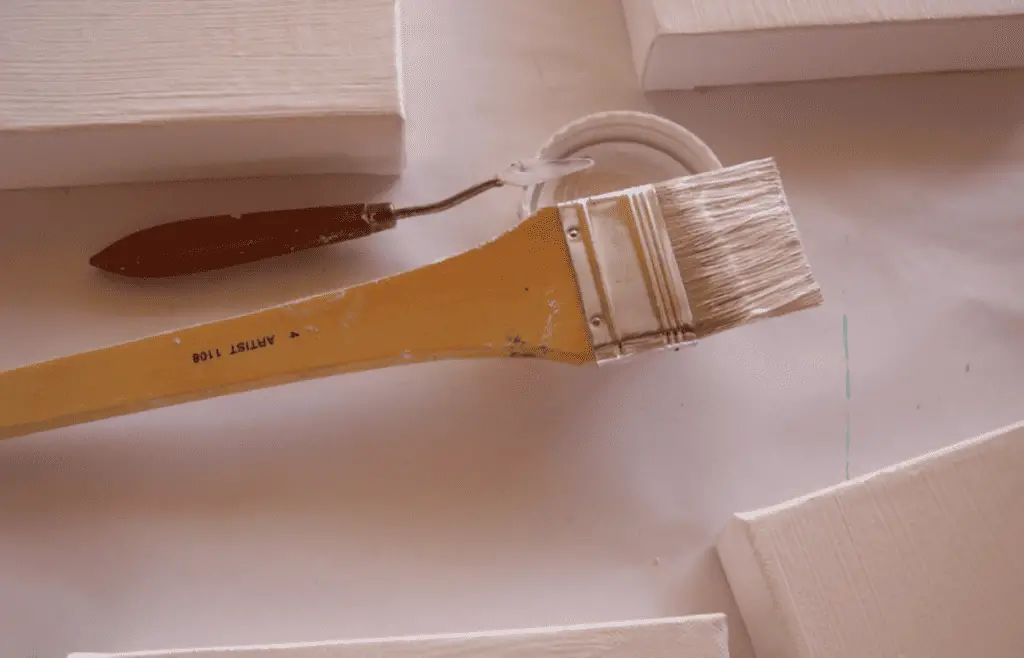Gesso works wonders for preparing a surface that is smooth and picks up pigment that will stay vibrant. To make it more versatile, gesso comes in a few formulations that vary in thickness. Sometimes, gesso that isn’t meant to be thick becomes thicker than it should be.
Gesso could be thick for a variety of reasons. You may have accidentally purchased thick gesso, but it something may have affected the structure of your gesso. The thickness is important because it can alter the way it applies to your surface.
The good thing is that there are a few ways you can change how thick your gesso is so that you don’t necessarily have to throw it away.
Causes of Thick Gesso

Gesso may be thick because it’s supposed to be, or it could be made thicker. Gesso can also become thicker unintentionally, which can make it harder to work with.
Use of Thickening Agents
Thickening agents can be added to gesso that’s too thin for a certain type of art project. Thickening agents can be added to gesso before it’s packaged since thicker formulas can be useful for certain purposes, such as for priming an oil or acrylic painting.
When too much thickening agent is added to gesso it can become a lot thicker than you intended. You’ll have to try and dilute the formula once again to make it usable. Sometimes, thickened gesso can’t be salvaged.
Use of Old or Expired Gesso
Gesso has a very long shelf life, but that doesn’t mean it’ll last forever. Gesso that is past its prime may become thicker as it starts to dry up. As it gets older, gesso might just need some dilution and mixing in order to loosen it up. Expired gesso is much harder to work with and it may not dry as evenly as it usually does.
Storage Conditions
Gesso is best kept with other paints in a spot that doesn’t get too much sun, is free of moisture, and in a room that remains on the cooler side. Some painters will even put a layer of plastic wrap over the container before putting the lid on it to make sure nothing can contaminate it.
We always suggest using a premium gesso like Mont Marte. To check the current price and availability of this gesso, click here to view the listing on Amazon.
Effects of Thick Gesso

Thick gesso does have its merits in artwork. Gesso is made at varying degrees of thickness because each type can result in a different type of priming surface. This is helpful to know so you can further understand how the gesso you’ve chosen is affecting your work.
Difficulty in Application
Thick gesso isn’t easy to work with. It takes some practice and getting used to. It can be hard to apply gesso in even and consistent layers with thick gesso, especially if you’re not using the right tools or technique to paint with a thicker formula. Thick gesso can also end up drying with a much rougher texture than intended if not applied well.
Impact on Final Artwork
Gesso ends up having somewhat of a grainy and gritty texture, though it’s quite fine and not always detectable. This texture is part of what makes gesso such a great primer, but different types of gesso will dry with different textures. This can have an impact on how paint and other types of artistic materials will settle onto your primed surface.
Impact on Tools
Thick gesso can be more difficult to clean off of brushes than other types of paints and primers. Over time, it can degrade some brushes if they aren’t cleaned well. There are specific brushes you can and should buy to apply gesso.
Prevention of Thick Gesso
Getting to know the different kinds of gesso available is ideal so you don’t have to worry about measurements and diluting or thickening agents. You can also stop gesso from becoming too thick and difficult to work with.
Proper Storage
As mentioned, where you store your gesso is important. Keep your gesso in the right location and it’ll stay at the consistency it’s meant to be. It’s also a good idea to have a couple of types on hand so you can pick your gesso based on your specific project.
Proper Mixing
Gesso needs to be stirred and mixed well before use, especially if anything is added to it to change its consistency. Instead of pouring an additive into your gesso container, measuring out the gesso into a separate container and then adding water or a thickening agent.
Use of Quality Materials
A lot of brands make gesso at varied price points. Gesso is one of those products where a bargain isn’t always a good thing. You’re better off spending a few extra dollars on a trusted brand of gesso, such as Winsor ; Newton, Golden Artist, or Grumbacher.
Solutions for Thick Gesso

Before giving up on a container of gesso that’s too thick for your upcoming project, you can try to thin it out before throwing it away.
Thinning the Gesso
You can thin gesso out with some water if the formula you’ve chosen is too dense for you. You don’t need a lot of water to do this. Your measurements will vary depending on the type of gesso you’re using. As a standard, for every 9-10 parts of water, you can add one part gesso.
Removal and Replacement
If you’ve already started priming your surface before realizing your gesso is too thick, it’s pretty easy to remove from most surfaces. Rubbing a piece of thin sandpaper over the painted surface will help flake off the gesso without ruining the surface it’s been painted on. You can then dilute your gesso or choose a new product to reprime your surface.
Final Thoughts
When it comes to gesso, you truly can have too much of a good thing. You don’t need a lot of gesso to sufficiently prime a surface. Thick gesso does have its uses but it can also make completing your project much more difficult if thick gesso isn’t what you need.
Care for your gesso as you would your paints, and you should be able to prevent it from getting too thick.

